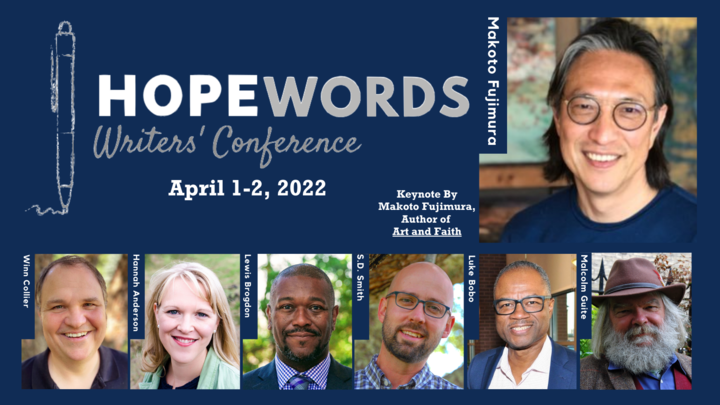
Bluefield, West Virginia
I traveled to Bluefield last Friday to attend the HopeWords Writers’ Conference. I had never been to Bluefield, although I often taken the West Virginia turnpike, I-77, through West Virginia. The turnpike bypasses Bluefield by about ten miles to the north. Known for coal and trains, the Norfolk Southern yard takes up much of the flat land along the valley. The railroad’s shops to maintain engines and cars are on the west side of the tracks and in the middle of the yard, a large coal tipple rises like a village steeple in an English town. There are still a few long coal trains running through the city, but I’m sure not as many as in previous decades with the decline of coal.
The commercial district of Bluefield rises to the east of the tracks, rising up the hill with each road that parallels the tracks gaining more elevation. Like many cities, the downtown suffered greatly over the last few decades. Decay can be seen everywhere. Old houses and abandon buildings became havens for illicit drug use. Many elegant homes that once overlooked the city fell into ruin. Their iron fences and gates rusted and the concrete steps leading up from the street below broken. Thankfully, in recent years there has been an attempt to bring back the downtown. Buildings and homes have been renovated. There are trendy restaurants and funky museums. The old West Virginia hotel is being converted to apartments. Amid this revival is the Granada Theater. Built in 1928, the theater stood abandoned for years. But after a community effort, it has been restored to its previous grandeur and reopened this year. What better place for a writer’s conference focusing on hope?
Bluefield may not be the most likely place for a writer’s conference, but several years ago, Travis Lowe, a city resident, had an idea. Travis, at the time a local pastor, admits he had never been to a writer’s conference but felt that Bluefield was an ideal place for a conference that talked about hope. From this dream, HopeWords was born. This is the fourth conference held, and the first I’ve attended. Kicking off the conference was an hour of wonderful jazz music on Friday evening.
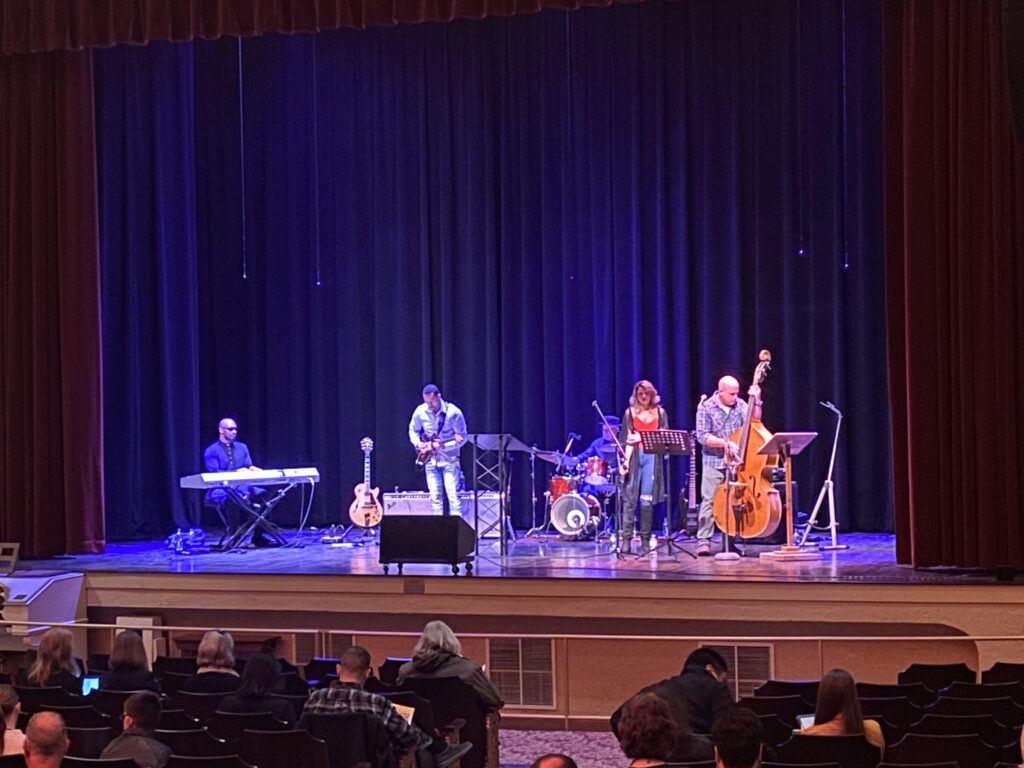
Makoto Fujimura
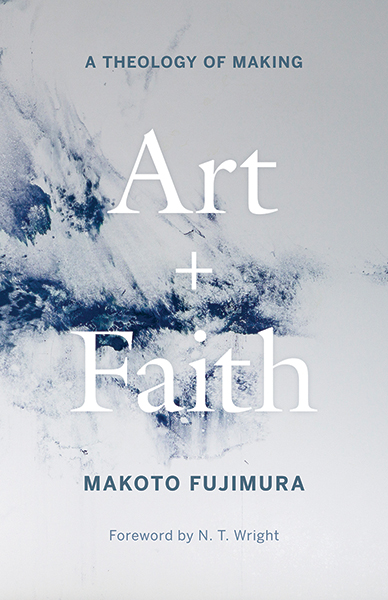
Drawing me to the conference was the Japanese/American artist and author Makoto Fujimura. Last year, I read his book Art and Faith: A Theology of Making and reviewed it in my blog in early in January. He gave a masterful presentation on Friday evening. As he started, he joked how he drove 8 hours from his home Princeton, NJ only to find himself back in Princeton (West Virginia).
Fujimura spoke of art rising out of the brokenness of our lives and world. While we prefer “good news,” he noted that we live in a world that is filled with bad news—hate and fear. But our art and writing can bring healing. He drew on the lives of Herman Melville, Vincent Van Gogh, Emily Dickerson along with the Japanese art known as Kintsugi, to show how beauty can come out of tragedy. Then he moved to the story of Jesus’ resurrection, suggesting that God is the real Kintsugi Master. He closed with the benediction that is found at the end of his book, Art and Faith, a part of which I’ve copied below:
May we steward well that the Creator King has given us, and accept God’s invitation to sanctify our imagination and creativity, even as we labor hard on this side of eternity.
On Saturday morning, Fujimara was joined by his wife, an attorney in New York. The two of them spoke of their hopeful work within the brothels of India, teaching art to the children and trying to help them find a way out of such improvised lifestyle. During his morning talk, Fujimura mentioned how his conversion to Christianity came through reading William Blake’s epic poem, “Jerusalem.” I found that interesting!
Hannah Anderson
The first speaker on Saturday morning was Hannah Anderson, who lives with her family in Roanoke, Virginia. Hannah is the author of four books, and I have a copy of Humble Roots on order as I did not get to the table to purchase this book before they were sold out. Having grown up in a part of Pennsylvania abandoned by industry, she said she feels right at home in Bluefield.
Anderson spoke of bringing the natural world into our writing, not as a prop or a setting, but as a part of the story. Nature and creation, she said, is telling a story. Nature provides the best example of “showing and not telling.” Nature reveals. Drawing on Psalm 19 and the writing of Annie Dillard, she linked nature back to God in both its glory and terror. “Nature is hopeful and darker than we image,” she said. She concluded with three points about nature in writing:
- Show, don’t tell. Get out of the way.
- Partner with nature. Remember that nature is a metaphor only from our perspective.
- Trust the story nature tells. Jesus used nature in parables not only because he lived in an agrarian world but because such stories are true.
Winn Collier
Our next speaker, Winn Collier, recently published the authorized biography of Eugene Peterson and directs the Peterson Center at Western Theological Seminary in Holland, Michigan. I received Peterson’s biography as a Christmas present but have not yet read it. I told him this when he signed my book. He laughed and handing the book back said that now I’ll have to read it.
Soft spoken but profound, Collier began discussing the poetry of Genesis 1 and moving to John 1. Collier commended poetry for helping us understand ourselves, God, and the world I which we live. But we must not forget that God spoke first (although he also quoted Rabbi Abraham Hessel, “God begins where words end”). God, at creation, choose to use words. And God always calls first. This also ties into the incarnation of God in Jesus Christ, where holiness and humanity go together. While we don’t do “sacred writing,” our writing becomes sacred when it responds to a God who calls us first.
Calling for bold and fresh words, Collier drew on the work of two authors. The late Jim Harrison (whom I have read and wrote the novella which became the movie “Legends of the Fall”) and the late Brian Doyle (whom I haven’t read, but now have his last book, One Long River of Songs, on my TBR list).
One Thin Dime Museum and Gary Bowlings House of Art
One of the presenters had cancelled, with allowed us to have a longer period for lunch. While there were restaurants nearby, the conference also provided bag lunches. I decided to go the bag lunch option and then use the rest of the time to explore a local history museum (One Thin Dime Museum) and an artist colony (Gary Bowlings House of Art) in the old school three blocks away from the theater. The art was modern, funky, gothic and made more delightful by Gary Bowling welcoming everyone who stopped in to visit.
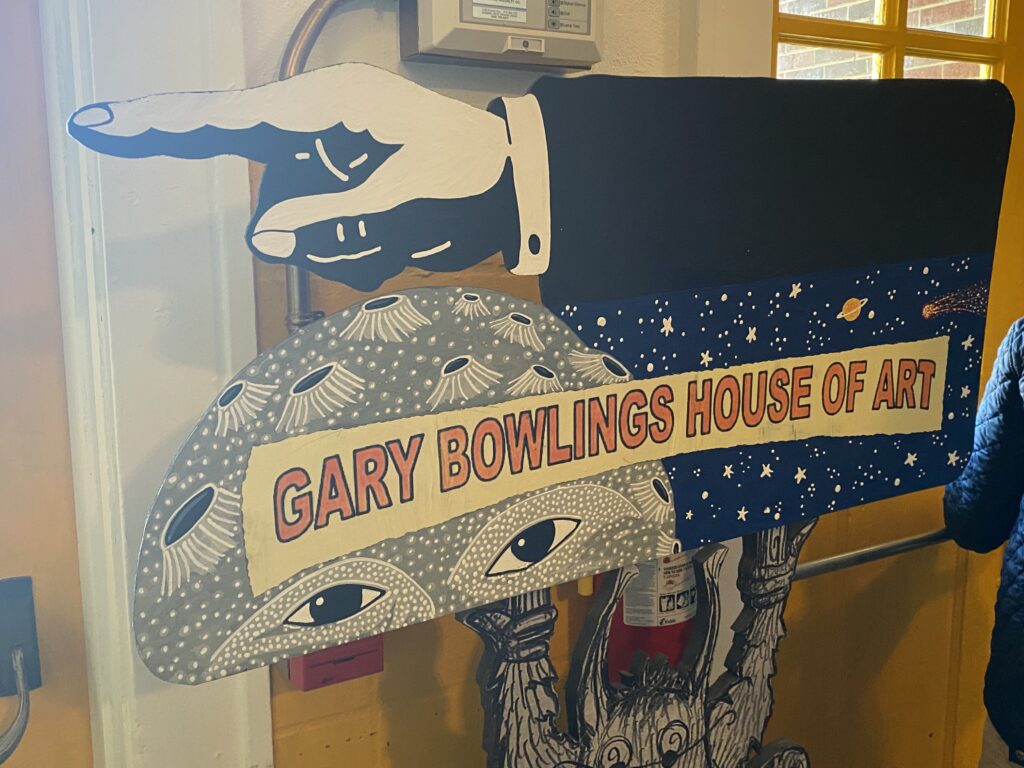
S. D. Smith
After the lunch break, the conference resumed with Travis Lowe humorously interviewing S. D. Smith. Smith is a West Virginia author from Beckley, who writes fantasy for a young audience. While I haven’t read him, it appears his books are filled with characters like rabbits with swords. Much of the conversation skirted around having children read fairytales. Smith defends the darkness in such stories. After all, they know the world is evil. But the fairytale doesn’t just scare the child with the dragon, but gives them hope in the likes of St. George who slays the dragon. “Write with evil and enemies,” he said, but “also where there is hope.”
Lewis Brogdon
Lewis Brogdon a Bluefield native, spoke on “Writing After a Struggle with God.” Brogdon is African American and an Old Testament scholar. He drew heavily on the writings of Walter Brueggmann, another Old Testament scholar who labelled the term “prophetic imagination” to describe the role of the Biblical prophets who “conjured and proposed different futures.” Recalling the works of Habakkuk and Jonah, along with the New Testament story of the Good Samaritan, he reminded us that our job as writers is not to look away from needs. It was the Samaritan, not the priest or Levite, who saw a need and did something about it.
“The pandemic exposed deep problems we have in the world that we have tried to cover up,” Brogdon said. “God is giving us an opportunity to do better.” He went on to insist that when we fail to show compassion, we lose our humanity. “The pandemic displays our “callous disregard for human life in America,” he said. Brogdon encouraged us to listen to the experiences of others, especially those living poverty. Listening to such stories will help us deepen our faith, for God works in such tensions in society.
Martin Luther King’s “Letter from a Birmingham Jail,” was the example Brogdon used of how writing can help us see. While the answers to the problems are not always easy, “the gospel does not call us to do nothing. We can’t fix the world, but we can make it a better place.” Brodgon then moved to the spiritual of Black preaching, which has generally been described as “pastoral, priestly, and prophetic.” He proposed a new model that moves from moral imagination to moral courage to moral intelligence. Then he asked, “what would it mean to write and inspire, to nurture and deepen imagination, courage, and intelligence in our readers?”
As he drew his remarks to a close, Brogdon offered several writing prompts for our journals (he also humorously suggested that anyone who doesn’t keep a journal should just get up and leave, as they don’t belong in a writer’s conference). First is a question to he asked in a recent piece he wrote on in an article titled, “America on the Blink: Musings on Race, Politics, and Religion:” “Is America endangered in losing its soul.”
Brogdon other questions were more general:
- What are you struggling with personally (especially that which intersects with a broken world)?
- What keeps you up at night, or wakes you up?
- What bothers you to the point that you can’t look away?
- What issues are you passionate about?
- Where have you experienced pain?
- What understanding have we gained about the pain in others which can help us tell the truth about racist and sexist things we once laughed about. In the last, he confessed personally about the jokes on homosexuality that used to be regularly laughed over within African American congregation.
Malcom Guite
Our last speaker was Malcom Guite, a British theologian, Anglican priest, and a poet.
Guite began his talk with a humorous “minor exorcism,” he which he dispelled any demons who challenge us not to write or read poetry. Then, he moved into his presentation on poetry which he centered around a poem titled “The Rain Stick,” by the late Irish poet (and his friend) Seamus Heaney. While using pieces of this poem to make his points, Guite used a real a rain stick (a dead piece of cactus with seeds inside that when tipped over makes the sound of rain) to illustrate what he was saying. Woven into this talk was a discussion about his study of chemistry and his challenge to the scientific demand that one only writes in the 3rd person.
Guite drew on Jesus’ saying about its easier for a camel to get through the eye of a needle than a rich person to get to heaven. Dismissing ideas to this saying such as there was a “needle gate into the city, he suggested that the poetic answer is the paradox. He linked Jesus’ “eye of a needle” with Heaney’s use of the term “ear of a raindrop.” In these small things, God can be encountered and experienced.
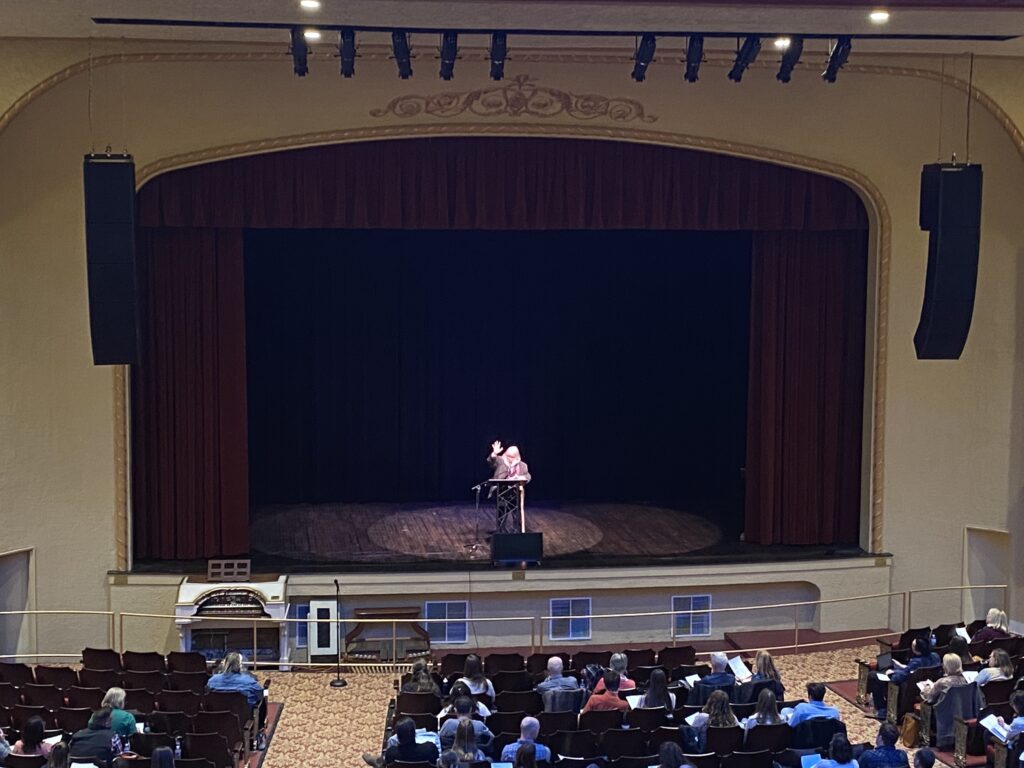
(I’m sitting in the balcony)
My favorite quote from Guite: “Sometimes we receive packages that says on the outside, “Contents may have settled in shipping. Sometimes I think our churches need to have these warnings on our outside walls.” Then he turned over the rain stick in his hand, and we once again heard the sound!
Future HopeWords
Next year’s HopeWords Writers’ Conference is scheduled for March 24-25, 2023. Won’t you join me? This year, the conference price was only $95, plus the price of a hotel room (I stayed in Princeton, West Virginia, where there are more hotels along I-77). Registration for 2023 opened today (April 9). Check it out here!
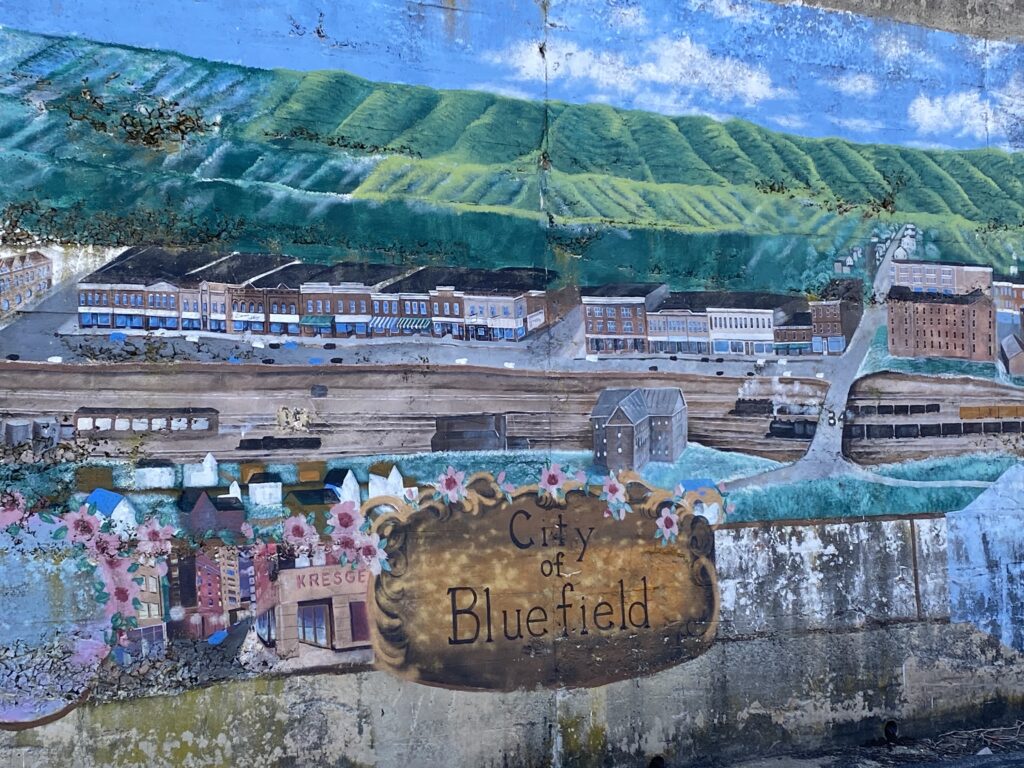
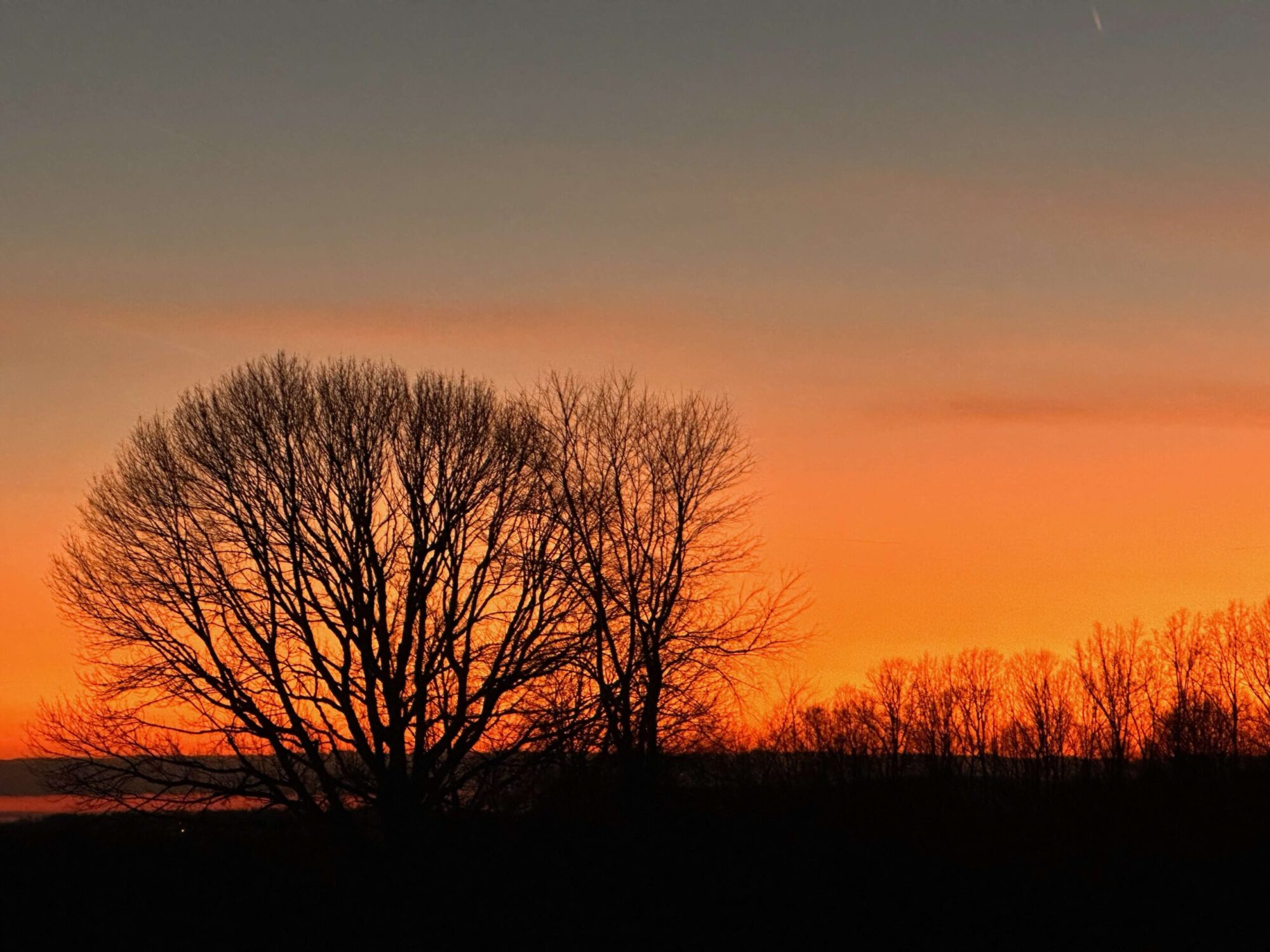
It does sound a very good event.
Thanks for the report and photographs.
All the best Jan
It sounds very interesting. The way you describe it makes me almost feel I was there too. I’ve been through Bluefield o my drives back to Charleston, but I never reAlly inspected the town. Maybe I should.
Has the turnpike always bypassed Bluefield? If not, I may have been there for the first time I remember being on the turnpike was in the early 70s. I seem to remember, at the time, parts of it was 3 lanes instead of 4. But this was before I was driving and I was in the back seat.
Sounds like another great adventure for you enjoy. I have to laugh (almost) with your blog header photo, we should all be enjoying more sights of springtime, and winter just keeps on. Oh well, life is good no matter what nature throws our way. Enjoy your weekend Jeff.
I am hoping to find a good spring photo of a stream, but yesterday and today we’ve had snow flurries!
Brian Doyle! I have several copies of “One Long River of Song” because I love his writing – and he can write about anything from his family to wonderful essays on animals and fish
and cancer to pieces like “100th St.” that you can’t read to the end with dry eyes. DON’T
BUY this book! I have several copies I’ve been waiting to give to the right people….Will bring to church tomorrow…..SallyR.
Sally, that would be wonderful. Thanks!
Sounds terrific! Thanks for your report.
It was a nice event. I sent you a note with the info on the 2023 event.
Sage
I have read the book by Collier, it is great!!
timm
I am looking forward to reading it! I gained a lot from the many Peterson books I’ve read over the year and had a chance to met him twice, when I lived in Utah.
What a great conference. A little different setup than the norm–and I liked it. I clicked through but there’s no newsletter to sign up for, to remind me as the date approaches. I have family on the East Coast so that could work!
That would be great to have you attend the conference. When I learn more details, I’ll pass them on to you and others who are interested. I lived about 1.5 hours from Bluefield.
I would love to join you next March!
I’ll send you the info when I see it, Bob. It would be wonderful to have a few of my virtual friends to attend!
That sounds like a really good conference.
It was both informative and fun. I wish I had taken a bit more time to see the area as the only free time was a 2 hour lunch.
As you may recall, I attended one as a young teenager when the headline speaker was a hippy looking guy by the name of Garrison Keillor who met with me one on one. One of my biggest regrets was not knowing who he was and using that time more wisely.
Attending another writers conference sounds very appealing right now.
I receive Garrison Keillor’s emails. Once a week or so, he has a list of letters from fans in which he replies. I don’t normally read them (but I read all his musings on life as a man nearly 80, just to see what’s in store…). I think you should send him a note and see if he responds.
Come out to West Virginia next March! Looks like at least two other readers to my blog are interested in the conference.
This all sounds wonderful… the venue, the music, and especially the speakers! I think I would have enjoyed every presentation. Brian Doyle was a regular contributor to the annual Daily Guideposts book and I grew to love his quirky writing style, but I struggled a bit with the only novel of his I read. I was quite saddened by his death.
I hope you’ll let us know who the speakers will be for the next conference when it’s announced.
I will let everyone know. I am glad to see such interest in the conference. I do have Doyle’s last book on my tbr list.
The speakers must have been more than inspirational. And what a bargain! I’ve never heard of a conference that was so reasonable.
I love to hear that communities are working to restore their downtowns and keep some of their historic buildings. New structures are just that, and they never have the same feeling as those built decades before.
As you know, I have a thing for old mining towns. While my work was more with hard rock mining, there are similarities with coal mining communities, too. When I prepared to write my dissertation, I read several books and dissertations on coal communities. There had been so little written about religion and mining, the exception was in the coal mining communities.